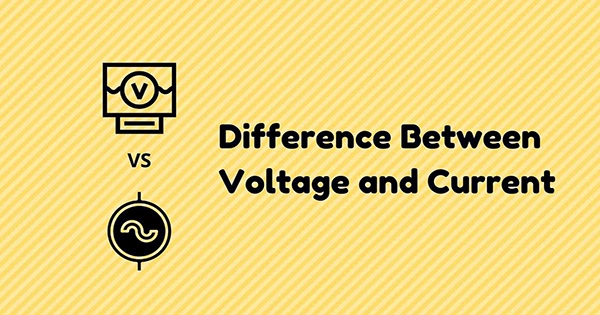Here is a comprehensive explanation of how voltage and current differ from one another. One of the most frequently asked issues in the field of electricity in physics is the distinction between current and voltage. The explanation of the distinction between volts and amps here can aid students in developing a solid understanding of the fundamentals and their parallels.
It is essential to have a comprehensive understanding of voltage and current before learning about the voltage and current difference. For more information, including details on voltage and current, visit the resources provided below.
Voltage: The electromagnetic force has a specific kind, which is voltage. Large current flows through the circuit when the voltage’s magnitude is high, and less current flows through it when its magnitude is low. The SI unit for voltage is volt, and it is denoted by the letter V.
Direct voltage and alternating voltage are the two main categories of voltage. While the polarity of the direct voltage does not change, that of the alternating voltage does. The electrochemical cell’s terminal potential difference generates direct voltage, and the alternator is responsible for alternating voltage.
The voltage at the sending end of a transmission line can occasionally be lower than the voltage at the receiving end. Voltage drop is the term used to describe the loss of voltage, which dissipates as heat. A heavy load is the cause of the voltage drop. Voltage loss happens when a heavy load is connected across the line because it draws a lot of currents.
The voltage rise in the line happens when the voltage at the receiving end is higher than the voltage at the sending end. The charging current of the transmission line is mostly to blame for the increase in voltage, known as the Ferranti effect.
Current: The voltage’s impact can be seen in the current. Electric charge carriers begin traveling from one atom to another when the potential difference is introduced across the conducting substance. The SI unit for current is the ampere, and the current is denoted by the symbol I. The 6.241018 charge carrier is represented by one ampere of current. Negative charge carriers make up the majority of the charge carriers, and current flows from a relatively negative point to a relatively positive point.
Direct current and alternating current are the two primary categories of electrical current. Electrons only move in one way in direct current, and they do the opposite in alternating current every millisecond.
Differences Between Voltage and Current
- The difference in electrical charges between two points in an electrical field is known as the voltage, whereas the flow of electrical charges between those points is known as the current.
- Volts and amperes are the SI (International unit of the standard) units for voltage and current, respectively.
- While current is denoted by the sign I, voltage is denoted by the symbol V.
- While the current is the ratio of the charge to the time, the voltage is defined as the ratio of the work done to the charge.
- While the current creates the electrostatic field around it, the voltage creates the magnetic field.
- The polarity of the alternating voltage continues to vary, and as a result, the alternating current is brought about. However, the direct voltage’s polarity does not change, and as a result, a direct current is produced.
- While the current is brought about by the flow of the electron in the electrical field, the voltage is the difference between the points in an electric field.
- A device known as a voltmeter is used to measure voltage, whereas an ammeter is used to measure current.
- While one ampere is equal to one column/second, one volt is equal to one joule/coulomb.
In a series circuit, the magnitude of the current is constant, but the magnitude of voltage is constant in each component. - While the current is unevenly distributed within the circuit component in a parallel circuit, the voltage across all of the circuit’s branches remains constant.
- While the circuit’s impedance is mostly responsible for the voltage drop, the circuit’s passive component (such as a resistor) is primarily responsible for the current loss.
- When a potential difference is applied across two electrical circuits, the impedance that results is the obstruction that results.
- While the current is the result of the voltage, the voltage is what causes the voltage.












